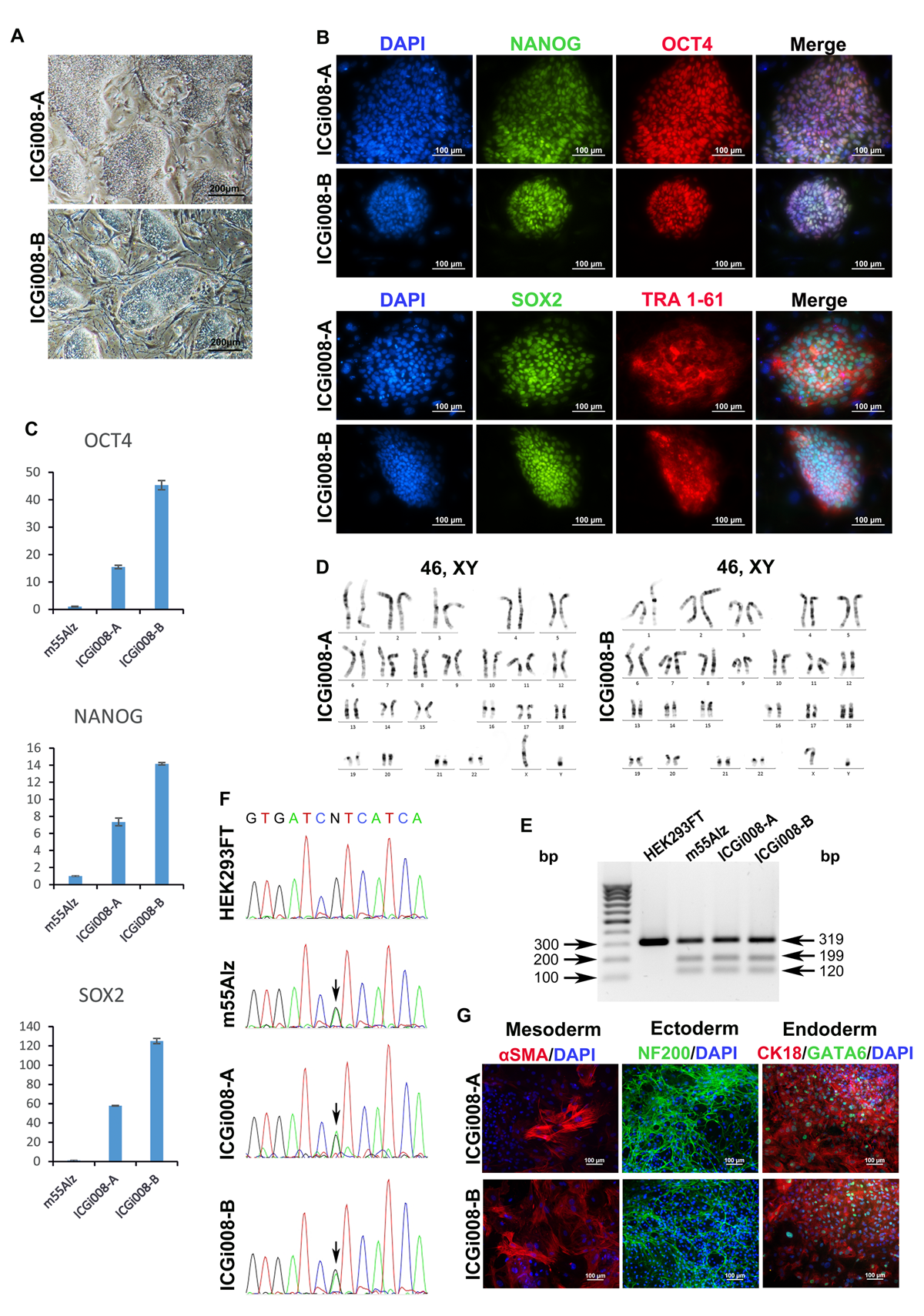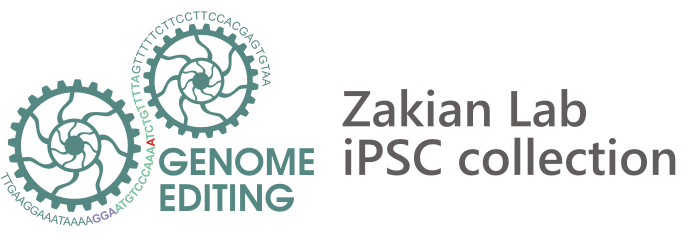Alzheimer’s disease
The iPSC lines ICGi008-A and ICGi008-B (https://hpscreg.eu/cell-line/ICGi008-A, https://hpscreg.eu/cell-line/ICGi008-B) were generated from dermal fibroblasts using episomal vectors expressing pluripotency factors. Dermal fibroblasts were obtained from a 55 year old male Сaucasian familial Alzheimer’s disease (AD) patient carrying heterozygous V717I mutation in the APP gene. The generated iPSC lines maintained the original APP genotype, expressed pluripotency markers, exhibited a normal karyotype and retained the ability to differentiate into cell types of the three germ layers. The iPSC lines will be useful for the study of the AD molecular and cellular mechanisms and drug screening.

The iPSC lines ICGi008-A and ICGi008-B (https://hpscreg.eu/cell-line/ICGi008-A, https://hpscreg.eu/cell-line/ICGi008-B) were generated from dermal fibroblasts using episomal vectors expressing pluripotency factors. Dermal fibroblasts were obtained from a 55 year old male Сaucasian familial Alzheimer’s disease (AD) patient carrying heterozygous V717I mutation in the APP gene. The generated iPSC lines maintained the original APP genotype, expressed pluripotency markers, exhibited a normal karyotype and retained the ability to differentiate into cell types of the three germ layers. The iPSC lines will be useful for the study of the AD molecular and cellular mechanisms and drug screening.
